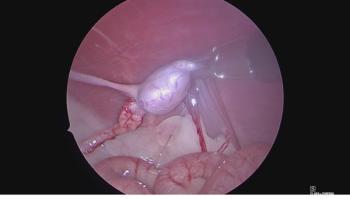
CVC Central 2007 Highlights: Practical ideas for managing common internal medicine problems
I've compiled these tips to help practitioners deal with common problems or situations in a manner that will help improve a patient's outcome, simplify the diagnosis, and minimize complications in daily practice.
I've compiled these tips to help practitioners deal with common problems or situations in a manner that will help improve a patient's outcome, simplify the diagnosis, and minimize complications in daily practice. You may already use many of these tips, but you may also find new ones to help you with long-troublesome problems.
DOGS
#1 In dogs with a recent onset of urinary incontinence, rule out polyuria and polydipsia as possible causes before initiating drug therapy. Some clients may not be aware that polyuria and polydipsia can be linked to urinary incontinence, so they may not report the polyuria and polydipsia. Polyuria can overwhelm the capacity of the sphincter in dogs with marginal sphincter function, resulting in urinary incontinence. Correcting the underlying cause of polyuria and polydipsia usually resolves the incontinence.
#2 Perform a urine culture, regardless of urinalysis results, in any dog that presents with poly uria and polydipsia, signs of urinary tract disease, or an endo crinopathy. The urinalysis may not show marked signs of inflammation, and bacteria may not be seen, in many disease states. This situation is particularly true with diseases that cause dilute urine production, suppress immune function, or otherwise inhibit the normal urinary tract defense mechanisms, such as diabetes mellitus and hyper adrenocorticism. In addition, occult pyelonephritis may cause polyuria and polydipsia. It is acceptable to not perform a culture in a dog that is experiencing its first episode of lower urinary tract signs consistent with cystitis. But perform cultures if subsequent episodes occur.
#3 Manage hypoglycemia in toy breeds or puppies by administering L-carnitine. Hypoglycemia in toy breeds or puppies can be frustrating since the most popular recommendation is to provide frequent feedings, which may or may not resolve the problem. Some human infants with fatty acid oxidation disorders respond to L-carnitine, which helps move fatty acids into the mitochondria for energy production.1 I use L-carnitine (50 mg/kg orally twice a day) until the puppies are 9 to 12 months old. In my experience, the hypoglycemic episodes diminish or disappear, the puppies are more active, and weight gain is more rapid. When supplemented with L-carnitine, these puppies don't seem to need the intensive feeding schedules recommended for managing hypoglycemia in toy breeds, and most do fine with twice-daily feedings. L-carnitine tablets and liquids are available at health food stores.
#4 Treat dogs with chronic vomiting for Physaloptera species infection before doing extensive work-ups. For otherwise healthy dogs with chronic low-grade vomiting (one or two times a day), good appetites, no weight loss, normal blood work results, and negative results on a fecal examination, treat for the stomach worm Physaloptera species before performing an endoscopic or a surgical gastroduodenal biopsy. Administer fenbendazole orally (75 mg/kg daily) for five days plus one day of pyrantel pamoate orally (7.5 mg/kg). Pyrantel can be given on the same day as fenbendazole. Repeat this treatment in three weeks. These doses are higher than the labeled doses, but I have found them to be successful after numerous treatment failures at the recommended doses.
#5 Think Addison's disease! In my opinion, a serious problem in private practice today is not including sodium, potassium, and chloride concentrations in many in-house serum chemistry profiles. When you examine a young- to middle-aged female dog with a history of intermittent vomiting and lethargy or anorexia, polyuria and polydipsia, or possibly an acute episode of shock, bradycardia is a good indicator of hypoadrenocorticism. The bradycardia may be relative (i.e. a heart rate of 100 beats/min may not seem slow but is in a dog that presents in shock with 10% dehydration). So in these dogs, be sure to measure sodium, potassium, and chloride concentrations to further support the diagnosis, and perform an ACTH stimulation test to confirm it.
BONUS TIP
A buccal mucosa bleeding time test is a simple way to evaluate predisposed breeds for von Willebrand's disease before elective surgery. Since von Willebrand's disease is common in Doberman pinschers, Chesapeake Bay retrievers, Scottish terriers, German wirehaired pointers, and Shetland sheepdogs, presurgical evaluation is prudent and can be inexpensively performed with a buccal mucosa bleeding time test.
CATS
#1 Suspect food allergy in cats with intense head or neck pruritus. The degree of self-mutilation and excoriation that occurs in cats with food allergy can be dramatic. Other differential diagnoses include ear mites, atopy, otitis externa, and scabies. However, cats with these conditions typically do not demonstrate the same degree of self-mutilation. I recommend a strict novel antigen diet; most patients show dramatic improvement within a few days.
#2 Learn to place esophageal and gastric feeding tubes. Cats need feeding tubes in cases of hepatic lipidosis (any tube), esophageal disease such as doxycycline-induced esophageal stricture (gastrostomy tubes), chronic renal failure (any tube), or any other disease that doesn't affect gastrointestinal function but suppresses a cat's appetite. I like esophagostomy tubes because they don't require special equipment and are easy to place. In cats with hepatic lipidosis, use a naso esophageal tube for a few days to feed and help stabilize these cats before administering anesthesia for esophageal or gastric feeding tube placement.
#3 Do not leave a polypropylene urinary catheter in the urethra of an unblocked male cat. Replace it with a polyvinyl or red rubber catheter. Polypropylene (used in Tom cat catheters) tends to be irritating to urethral mucosa and can cause urethrospasm once the tube is removed, often resulting in a cycle of recatheterization and additional irritation. Polyvinyl (used in infant feeding tubes) and red rubber catheters are nonreactive. If you must leave a polypropylene catheter in, administer an antispasmodic such as prazosin from the beginning. All catheters should be attached to a closed, sterile collection system.
#4 Use prednisolone in cats, not prednisone. Sometimes cats fail to respond to prednisone because the diagnosis is wrong and they don't have a corticosteroid-responsive disease. But sometimes they fail to respond because they can't convert prednisone to the active form, prednisolone. Eliminate the potential for treatment failure based on poor hepatic conversion by giving prednisolone to all cats that require oral corticosteroid therapy from the start.
#5 As an alternative to lactulose in cats with chronic constipation or hepatic encephalopathy, try milk or cream. Lactulose is effective because there is no enzyme to digest this disaccharide; thus, the disaccharide stimulates osmotic diarrhea. Most cats are lactose-intolerant and will have a similar response to milk. Cats frequently hate the taste of lactulose but love milk. Titrate the dose to soften stools.
BONUS TIP
Lime sulfur is still the most effective antifungal for treating dermatophytosis. Sure it stinks, but it's safer than griseofulvin and cheaper than fluconazole or itraconazole. And it more effectively eliminates dermatophytosis than any of those products combined.
Kenneth R. Harkin, DVM, DACVIM (small animal internal medicine), Department of Small Animal Internal Medicine, College of Veterinary Medicine, Kansas State University, Manhattan, KS 66506.
REFERENCE
1. Hale DE, Bennett MJ. Fatty acid oxidation disorders: a new class of metabolic diseases. J Pediatr 1992;121(1):1-11.
Newsletter
From exam room tips to practice management insights, get trusted veterinary news delivered straight to your inbox—subscribe to dvm360.




